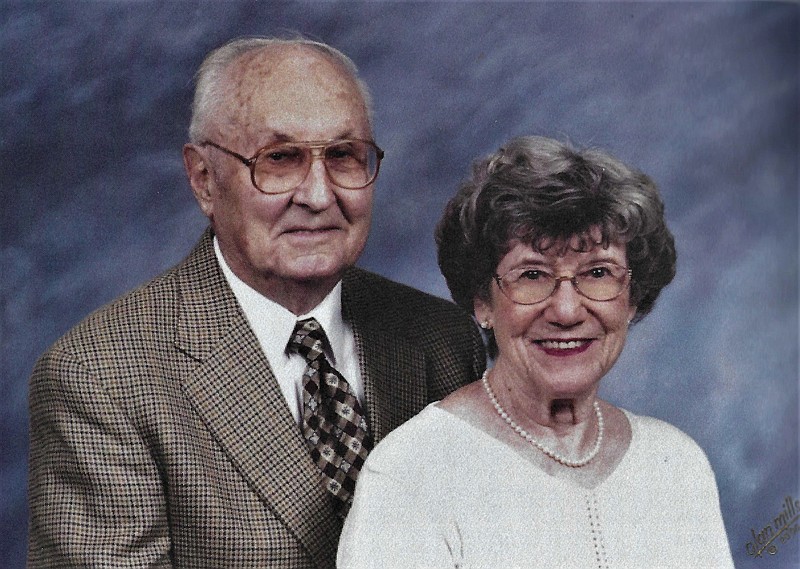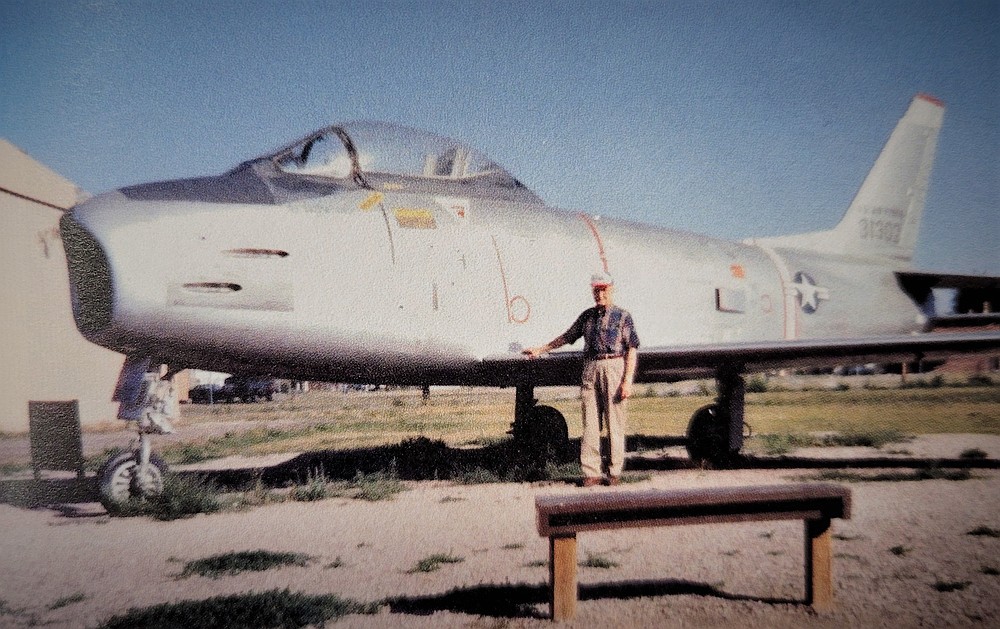Lahmeyer in den aktiven Dienst als Düsenpilot im Koreakrieg zurückgerufen (Artikel News Tribune, 9.1.2023)

Editor’s note: This is the final installment of a two-part series highlighting the military experiences of Raymond Lahmeyer.
It was the early weeks of 1945, and a 25-year-old Raymond Lahmeyer was parachuting into an unknown situation in the Philippines. His plane had been damaged while attacking Japanese artillery positions and, as many American service members realized, being captured by the Japanese could mean an untold period of hardship in a prison camp or even death.
“It seemed as though I was suspended in the air and was not descending,” wrote Lahmeyer in his self-published memoirs. “I could see for several miles, and the first thing that caught my eye was a vehicle coming my way.”
After landing, he released his parachute, grabbed his .45 pistol and prepared for a potential encounter with Japanese troops. Fortunately, as the vehicle approached, the young airman discovered it was an American personnel carrier.
He soon returned to his squadron, and a few weeks later in April 1945, began flying fighter sweeps over Formosa (Taiwan) while also providing ground cover for heavy bombers and the infantry. The following month, when the squadron commander was reassigned, Lahmeyer was promoted to fill the vacancy.
Lahmeyer said, “Early in August, with the Philippines secure, we made a move to … a small island of Okinawa. This was to be the staging area for the final assault of the Japanese mainland.”
The assault never occurred since Japan soon surrendered following the bombings of Nagasaki and Hiroshima. The squadron was moved to Yokohama, Japan, in early September, and he spent the next several weeks flying assorted training missions.
“Maj. Ray Lahmeyer … is home on terminal leave after four years,” reported the Bland Courier on Dec. 20, 1945. The recipient of a Purple Heart and Distinguished Flying Cross, the paper further noted, “He will enter the Missouri School of Mines at Rolla …”
Choosing to maintain his military affiliation by enlisting in the Air Force Reserve, the next few years were busy with the completion of his degree, being hired by the Missouri State Highway Department and welcoming a second son, Henry, in January 1947.
The veteran relocated his family to Jefferson City area, where he was employed by the bridge office of the highway department. However, in April 1951, his Air Force Reserve unit at Scott Air Force Base was mobilized for active duty during the Korean War.
The couple’s third child, a son named Robert, was born at the hospital on Scott Air Force Base in September 1951. The next month, Lahmeyer was advised that because of his service as a fighter pilot in World War II, he had been selected to train to fly jets.
“On Nov. 1, 1951, I reported to Williams Air Base and after some orientation, checked out in the F-80 Shooting Star,” Lahmeyer reflected in his later years. “This was quite an experience compared to the old prop planes.”
He continued, “Later they brought in some F-86 Sabre jets, and I checked out on the F-86 as well. The F-86 was faster and capable of supersonic flight in a slight dive.”
By December 1951, having acquired proficiency in the F-86, he was transferred to Nellis Air Force Base in Las Vegas for crew training. It was not long thereafter that he boarded a transport plane bound for Korea. Upon arrival overseas, he was assigned to the 51st Fighter Interceptor Wing near Suwon, Korea.
Intially designated as the supply officer of the Air Base Group, Maj. Lahmeyer acquired some flight hours aboard C-47 transport aircraft. Weeks later, he was attached to the 16th Fighter Squadron and, in July 1952, began flying combat missions in the F-86.
Describing these missions, he wrote, “… our armament of six 50-caliber guns with an excellent sight was far superior to the 20-millimeter slow firing cannons of the (enemy) MiG. As a result, our superior pilots built up a 14-to-1 kill ratio over the MiGs.”
Most of these combat flights, he said, consisted in the interception of MiGs crossing the border from Manchuria into North Korea. After completing about six months of combat flying in December 1952, he had logged approximately 35 missions.
Returning stateside after his second period of wartime service, Lahmeyer received his discharge in January 1953 and continued his employment at the Missouri State Highway Department. In 1956, he and his wife welcomed their fourth and final child, a daughter named Karen Sue.
In 1953, following his discharge from active duty, he joined the Missouri National Guard and retired in 1979 after having reached the rank of colonel. He remained employed by the highway department, retiring as a district engineer in 1981.
The combat veteran died April 14, 2007, only days after turning 88 years old. He was laid to rest with full military honors in Riverview Cemetery in Jefferson City. His beloved wife, Kay, died in 2013.
“Dad didn’t go around telling war stories all of the time, but he would speak some about it, on occasion,” remarked his oldest son, Chuck. “I recall him saying that when he came home to Bland after World War II, people just weren’t interested in hearing war stories, and I think that disappointed him a little.”
Chuck added, “But my father had a fascinating military career and may not have been a Medal of Honor recipient, but it’s pretty unique that he was able to fly two top-notch aircraft in two separate wars. I have always been impressed by that achievement.”
Jeremy P. Ämick writes on behalf of the Silver Star Families of America.
